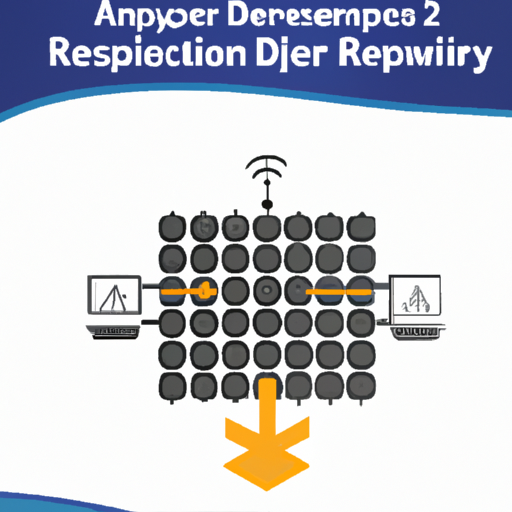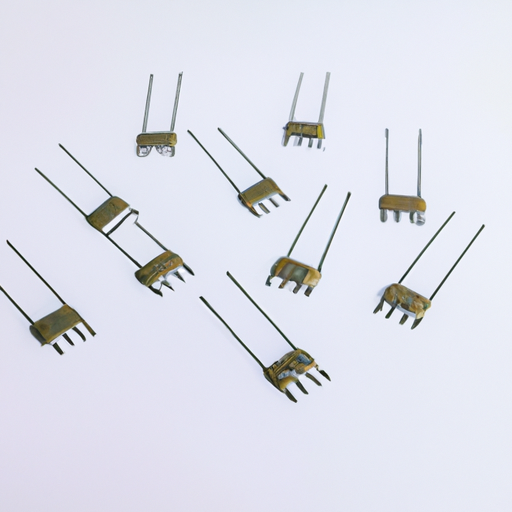CFR-25JB-52-110R Resistors highlighting the core functional technology articles and application development cases of Resistors that are effective.
Core Functional Technologies of Resistors
1. Ohmic Resistance: The fundamental property of a resistor is its ability to provide a specific resistance value, which limits the flow of electric current in accordance with Ohm's Law (V = IR). This principle is crucial for controlling current in various electronic applications.
2. Temperature Coefficient: Resistors exhibit a temperature coefficient that quantifies how their resistance changes with temperature variations. The CFR-25JB series, being a metal film resistor, typically has a low temperature coefficient, ensuring stable performance across a wide temperature range, which is vital for precision applications.
3. Power Rating: Each resistor has a power rating that indicates the maximum power it can dissipate without overheating. The CFR-25JB-52-110R is rated at 1/4 watt, making it suitable for low-power applications where heat management is critical.
4. Tolerance: Tolerance defines the permissible variation in resistance from its nominal value. The CFR-25JB series generally has a tolerance of ±5%, which is acceptable for many applications, allowing for reliable circuit design without excessive variability.
5. Noise Characteristics: Resistors can introduce electrical noise, which can affect circuit performance, especially in sensitive applications. Metal film resistors, like the CFR-25JB-52-110R, are known for their low noise characteristics, making them preferable in high-fidelity audio and precision measurement applications.
Application Development Cases
1. Signal Conditioning in Audio Equipment: In audio circuits, resistors play a critical role in signal conditioning, such as in equalizers and filters. The CFR-25JB-52-110R can be effectively utilized in these applications to ensure accurate signal processing while minimizing noise, thus enhancing audio quality.
2. Voltage Divider Circuits: Resistors are essential in creating voltage dividers that provide reference voltages for various components. The CFR-25JB can be employed in these circuits to achieve precise voltage levels necessary for microcontrollers or sensors, ensuring reliable operation.
3. Current Limiting in LED Circuits: Resistors are commonly used to limit the current flowing through LEDs, preventing potential damage. The CFR-25JB-52-110R can be selected based on the forward voltage and current specifications of the LED, ensuring optimal brightness and longevity.
4. Biasing Transistors: In amplifier circuits, resistors are crucial for setting the biasing conditions of transistors. The stability and precision of the CFR-25JB series make it suitable for biasing applications in audio and RF amplifiers, contributing to improved linearity and performance.
5. Feedback Networks in Operational Amplifiers: Resistors are integral to feedback networks in operational amplifiers, determining gain and stability. The CFR-25JB-52-110R can be used in these configurations to achieve desired amplification levels with minimal distortion, enhancing overall circuit performance.
6. Temperature Sensing Circuits: In temperature sensing applications, resistors can be part of a Wheatstone bridge configuration. The stability and low temperature coefficient of the CFR-25JB series make it ideal for accurate temperature measurements, ensuring reliable data in critical applications.
Conclusion
The CFR-25JB-52-110R resistor exemplifies the essential role of resistors in electronic circuits. Its characteristics, such as low noise, stability, and precise resistance value, make it suitable for a wide range of applications, from audio equipment to sensor circuits. Understanding the core technologies and application cases of resistors can help engineers and designers select the right components for their specific needs, ensuring effective and reliable circuit performance. By leveraging the unique properties of resistors like the CFR-25JB-52-110R, designers can enhance the functionality and reliability of their electronic systems.













